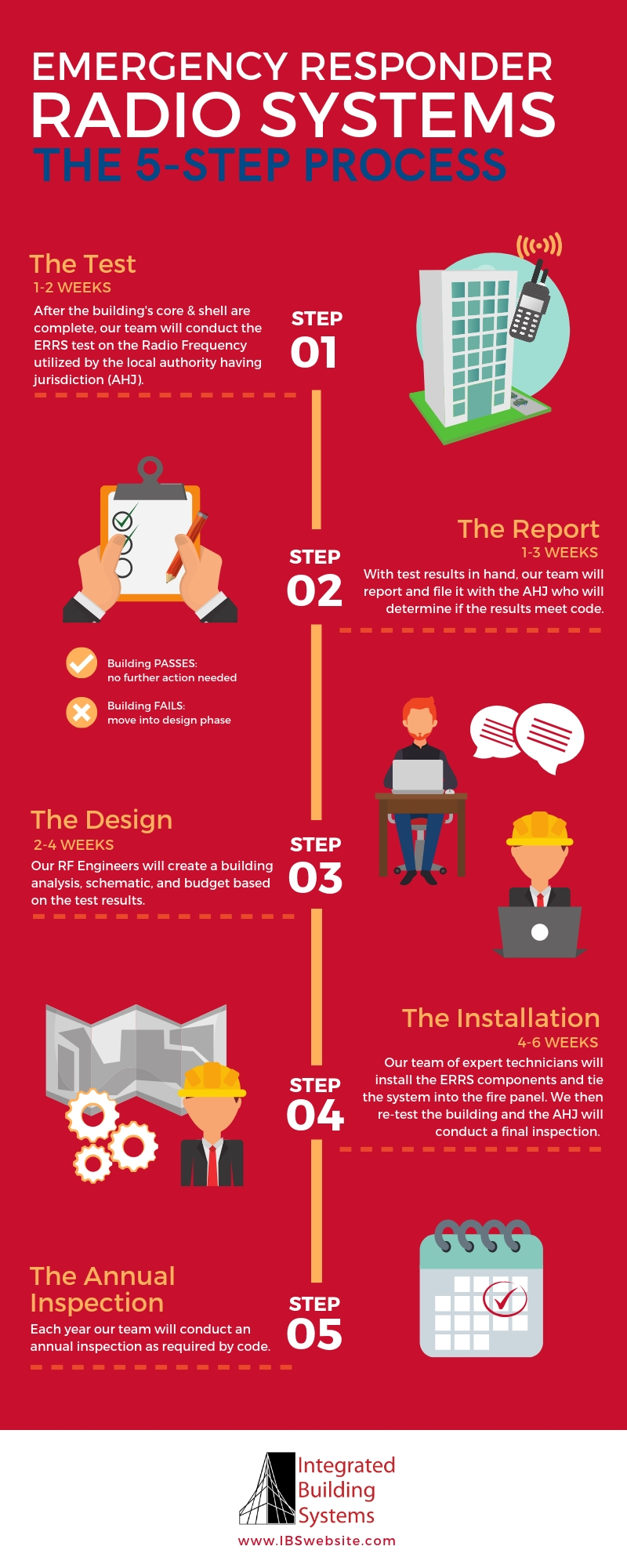First responder communication
In an emergency, clear radio communication inside a building is mission-critical for first responders. Following the tragic events of 9/11, national fire codes were revised to ensure that emergency personnel would have access to reliable radio transmissions.
National fire code, local enforcement
Code set by the International Fire Code (IFC) and National Fire Prevention Association (NFPA) requires building owners to provide first responder radio coverage in their facility. If the building fails the mandated radio-frequency (RF) test, then the building owner must install an Emergency Responder Radio System (ERRS) to boost the specified radio signal.
Components of an ERRS
An ERRS is an enhanced public-safety radio system that operates much like a cell phone. It allows important information such as the first responder’s physical condition and location to be transmitted back to a management location to help coordinate the emergency response.
To work properly, the ERRS radio signals must penetrate all areas of a building, including spaces that are especially challenging such as stairwells, basements, rooms with low-E glass windows, and thick-walled or shielded areas.
The components of an ERRS include:
Bi-directional amplifier (BDA)
Donor antenna
Battery back-up unit (BBU)
Plenum cabling
5-Step ERRS Process
National code sets standards for ERRS equipment and functionality, but enforcement and testing guidelines are left to local authorities. That leaves building owners and their contractors to ask: When do we test? Who determines if our building passes or fails? How long does the process take?
Learn the 5-step process in the infographic below.


